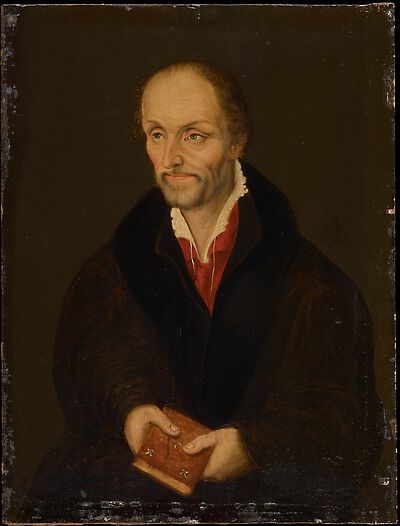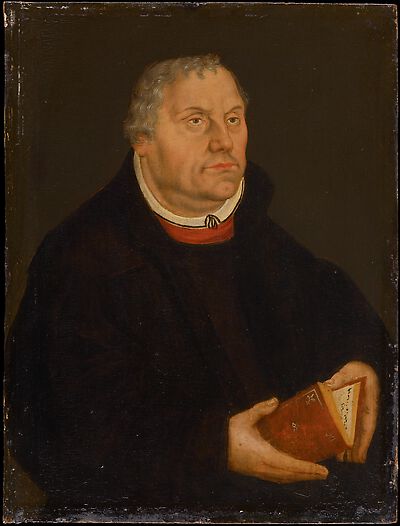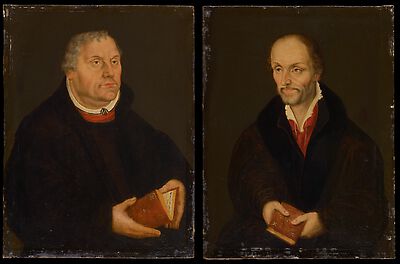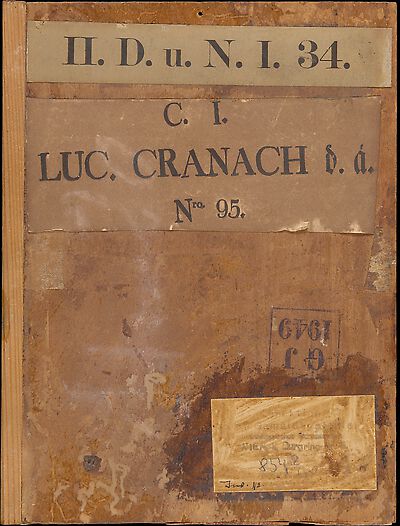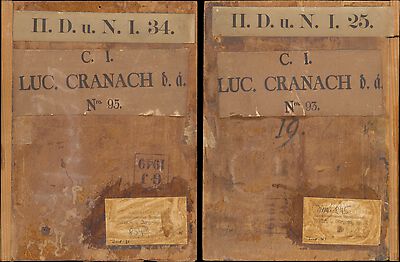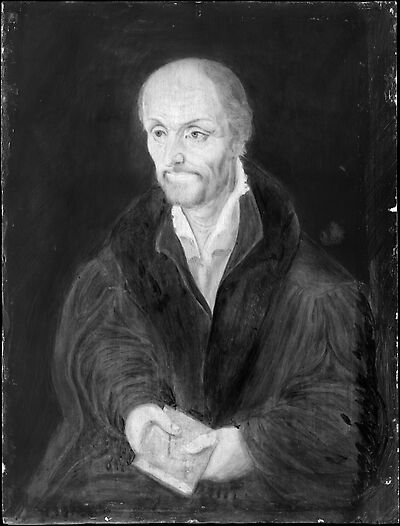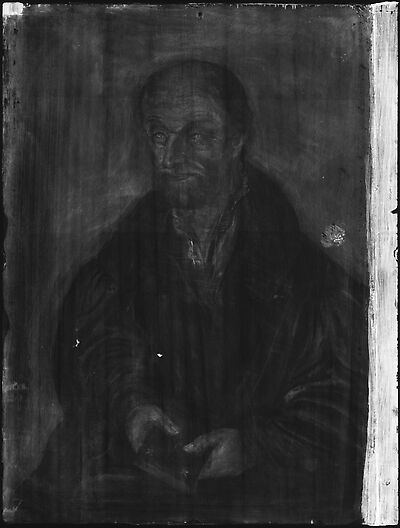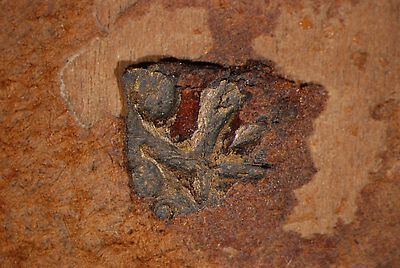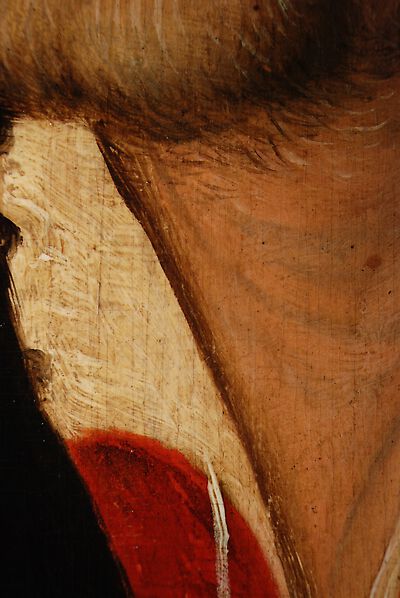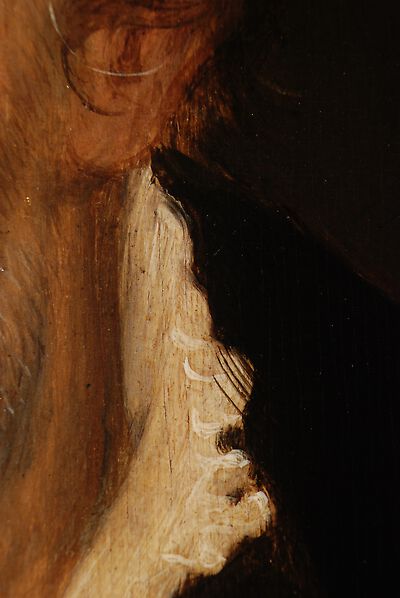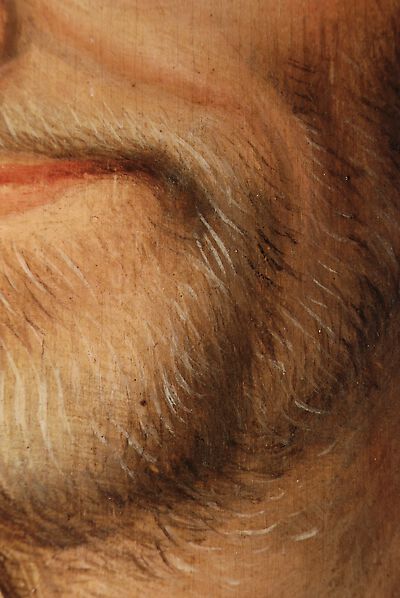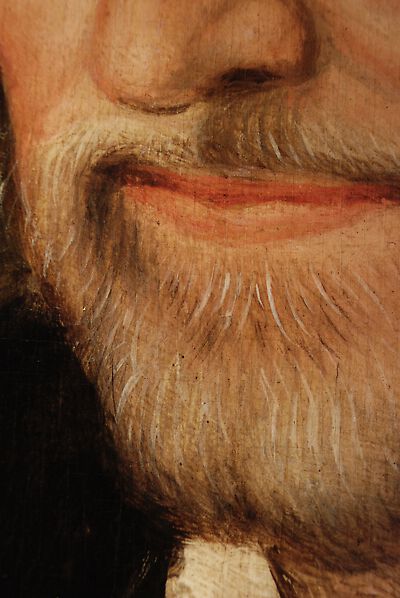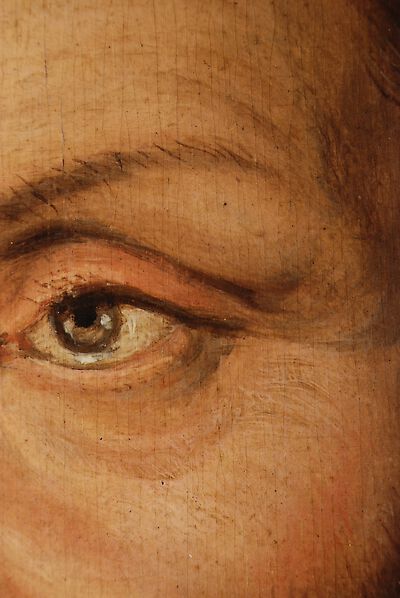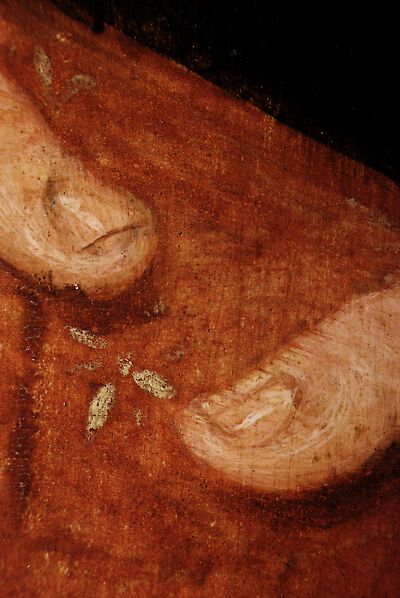Portrait of Martin Luther (1483-1546) in later life, bareheaded in three-quarter profile facing right. He holds an open book in both hands. The background is painted in a dark uniform tone. Conceived as the pendant to the portrait of Philipp Melanchthon (AT_KHM_GG854_FR-none).
- Attributions
-
Copy after Lucas Cranach the Younger
Circle of Lucas Cranach the Elder
Attributions
| Copy after Lucas Cranach the Younger | [Cat. Vienna 1991, 47] |
| Circle of Lucas Cranach the Elder | 'Cranach Schule' [Engerth, Cat. Vienna 1886, Bd. III, No. 1486] |
| Lucas Cranach the Elder | [Schuchardt 1851, Bd. 2, 140] |
| Hans Holbein the Elder | Treasury inventory from 1747/48, No. 7: 'Das portrait Melanchton von alten Holbein (the portrait of Melanchton by the elder Holbein)' [Zimmermann1889, CCXLIII-CCXLVI, Reg. Nr. 6243] |
- Production date
- about 1570 - 1580
Production date
| about 1570 - 1580 | [Cat. Vienna 1991, 47] |
- Dimensions
- Dimensions of support: 22.4 (l./r.) x 15.9 (t.) 16.1 (b.) cm (without additions)
Dimensions
Dimensions of support: 22.4 (l./r.) x 15.9 (t.) 16.1 (b.) cm (without additions)
22.4 (l./r.) x 16.9 (t.) 17.0 (b.) cm (including additions)
(the dimension correspond with the original dimensions of the panel)
Dimensions including frame: 36 x 28 x 4.5 cm
[Technical Examination, Kunsthistorisches Museum 2008]
- Signature / Dating
None
- Inscriptions and Labels
Recto:
- bottom right: brush application, overpainted: 'No. i9' (only visible in the x-radiograph)
Reverse of the panel:
- top:
paper label, printed: 'II. …Inscriptions and Labels
Stamps, Seals, Labels:
Recto:
- bottom right: brush application, overpainted: 'No. i9' (only visible in the x-radiograph)
Reverse of the panel:
- top:
paper label, printed: 'II. D. u. N. I. 25.'
- beneath the above:
paper label, printed: 'C. I. LUC. CRANACH. d. ä. Nro. 93.'
- centre:
handwritten in black paint: '19.'
- centre, right:
handwritten in black paint: '6 1/2'
- bottom, centre:
Stamp: 'GJ 1949'
- bottom right:
paper label: 'Direktion der Gemäldegalerie Kunsthistorisches Staatsmuseum Wien, I., Burgring Nr. 5 No 845', added in ballpoint pen '845', added in ink: 'Inv. Nr.'
[Kunsthistorisches Museum, revised 2012]
- Owner
- Kunsthistorisches Museum, Vienna
- Repository
- Kunsthistorisches Museum, Vienna
- Location
- Vienna
- CDA ID
- AT_KHM_GG854
- FR (1978) Nr.
- FR-none
- Persistent Link
- https://lucascranach.org/en/AT_KHM_GG854/
